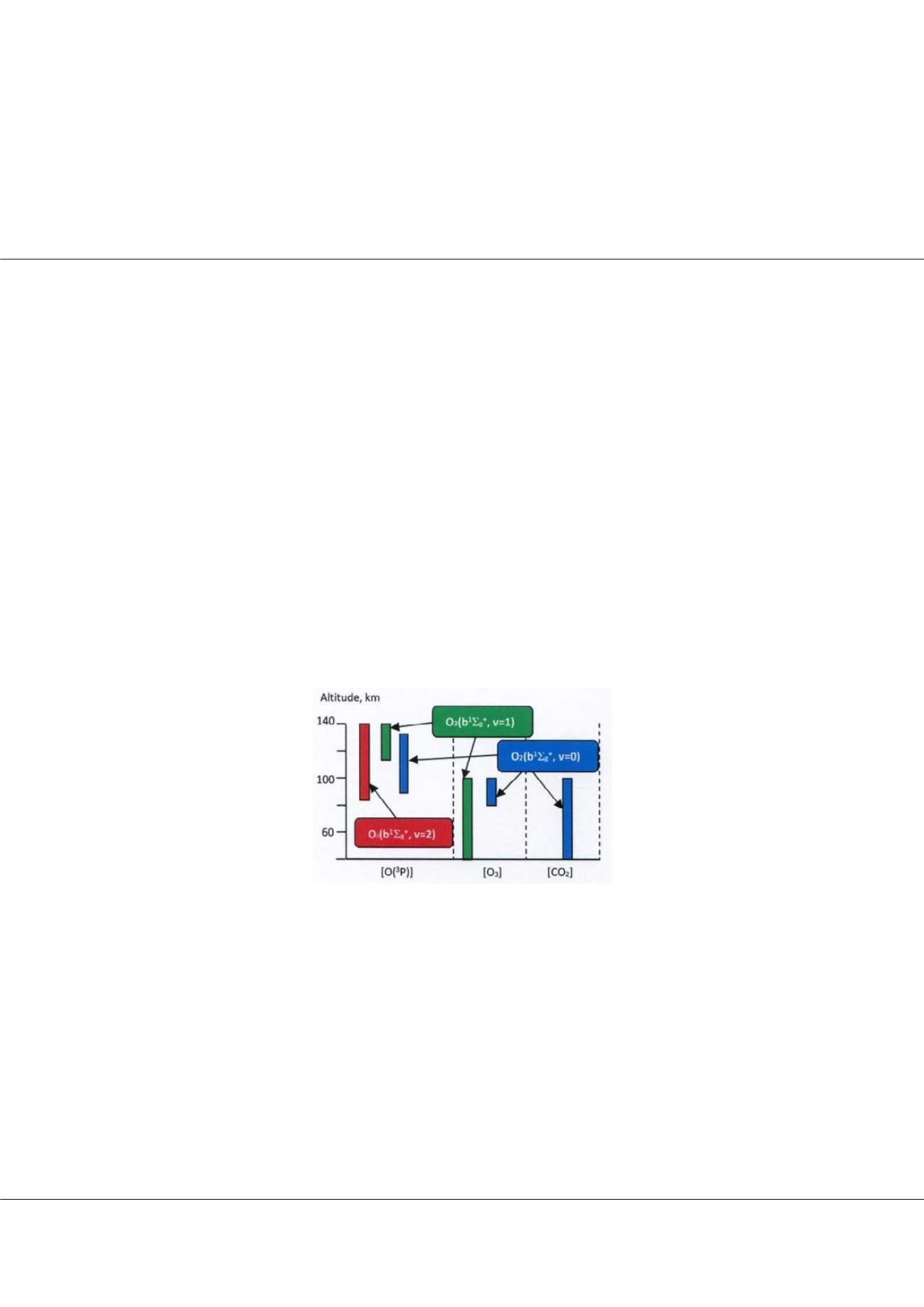

Page 36
Notes:
conferenceseries
.com
Volume 6, Issue 2 (Suppl)
J Aeronaut Aerospace Eng
ISSN: 2168-9792 JAAE, an open access journal
Satellite 2017
May 11-13, 2017
May 11-13, 2017 Barcelona, Spain
3
rd
International Conference and Exhibition on
Satellite & Space Missions
Proposals onmulti-channel methods for the simultaneous remote sensing of [O(
3
P)], [О
3
] and [CО
2
] altitude
profiles in the mesosphere and lower thermosphere in daytime
Valentine A Yankovsky
St. Petersburg State University, Russia
T
hree small components of O(
3
P), O
3
and CO
2
in the daytime mesosphere and lower thermosphere (MLT) of the Earth are
responsible for the thermal regime of the atmosphere. Among these components, only the altitude profile of ozone concentration
can be measured by a direct method for absorbing radiation from the Sun or the stars in the UV range of the spectrum. However, this
method is most often realized in the conditions of twilight, so cannot give an exhaustive presentation of the altitude profile of [O
3
]
throughout the daytime hours. Height profile of the atomic oxygen is usually restored on the assumption that it is looped with ozone.
Despite the attractiveness of this approach, it cannot explain the altitude profile of atomic oxygen above 96-98 Km, where the ozone
concentration decreases by catastrophic style. The CO
2
concentration in the MLT region is usually retrieved indirectly by solving
complicated kinetic problem for the non- LTE radioactive transfer. The analogous difficulties of [O
3
] retrieval from the observation
of emission in 9.6 μm band are explained by the complexity of the vibrational kinetics of O
3
molecule. Retrieved values of both CO
2
and O
3
to some extent depend on a prior information about the O(
3
P) altitude profile. The problem can be solved by using individual
proxy for each of the target component. Using a sensitivity study and uncertainty analysis of the contemporary model of O
3
and O
2
photolysis in the MLT, YM2011, we have tested three excited components; namely the electronic-vibrational excited molecules, О
2
(b1
g
+, v=0, 1, 2), as [O(
3
P)], [O
3
] and [CO
2
] proxies. We conclude that in the altitude range of 50-85 km, simultaneously independent
retrievals of [O
3
] and [CO
2
] are possible (see figure 1); and in the range of 85-100 Km, the emissions in three channels from the
О
2
(b1
g
+, v=0, 1, 2) molecules make it possible to retrieve the [O
3
], [CO
2
] and [O(
3
P)] simultaneously.
Figure 1:
The types of proxy are recommended for retrieval of altitude profiles of the [O(
3
P)], [O
3
] and [CO
2
] in the MLT region.
Biography
Valentine A Yankovsky is an Associate Professor of Atmospheric Physics at St. Petersburg State University. In 1986, he completed his PhD at St. Petersburg
University. His main research fields are “The atmospheric photochemistry in the MLT region, the sensitivity and uncertainty study of complex photochemical
systems and the retrieval of ozone and atomic oxygen in the MLT”. He has published more than 25 papers in reputed journals.
vyankovsky@gmail.comValentine A Yankovsky, J Aeronaut Aerospace Eng 2017, 6:2(Suppl)
http://dx.doi.org/10.4172/2168-9792-C1-016















